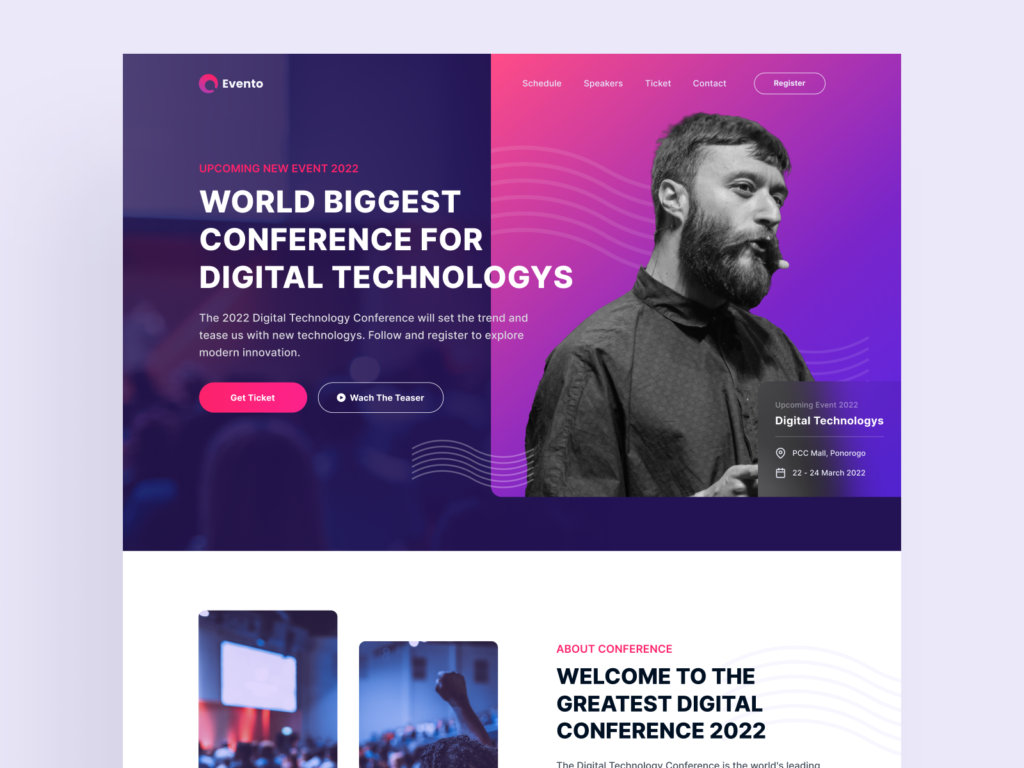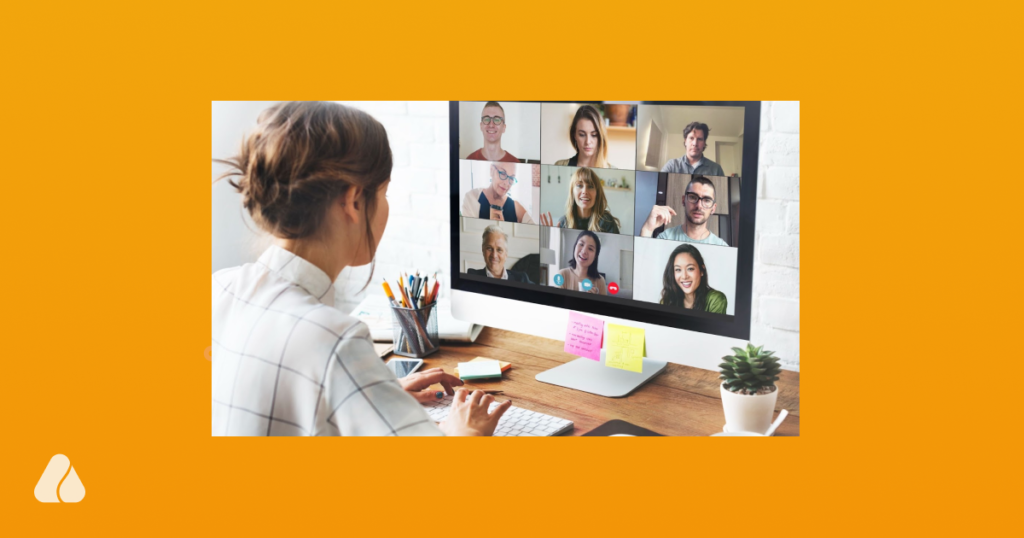 Ticket release
Ticket release
Convert early adopters and build buzz with early bird ticket releases. Keep up the momentum by releasing subsequent tickets tier by tier.
 Owned audiences
Owned audiences
Generate early traction by sending direct invites to your owned audiences. (If it’s appropriate to your event type, of course.) Target your existing customers, mailing list contacts, and social media followers.
 New attendees
New attendees
Unless you’re only focusing on existing customers, you’ll want to attract new attendees, too. While the most effective marketing strategies will depend on your audience, industry, and event, here are some reliable channels to use:
- Email marketing: Engage existing contacts with individual emails or nurture campaigns. Reach new audiences by buying lists or partnering with sponsors, partners, or newsletter operators.
- Social media advertising: Deliver ads and sponsored content on your target attendees’ preferred social network.
- Influencer marketing: If your industry has trusted influencers, pitch them on a partnership. This works especially well if they also agree to speak at your event.
- Content marketing: Create new top-of-funnel content to promote your event. Drop CTAs into relevant older assets.
 Swags, gifts, and prizes
Swags, gifts, and prizes
You can’t have an event promotion checklist without swag. But there’s a fine line between useful giveaways and useless junk. Thoughtful gifting can be a difference between a good and a successful event.
Branded apparel (t-shirts, hoodies, socks) and bags (totes, duffels, travel suitcases) are easy wins. Notebooks are handy, too. Also, bottles, travel mugs, and other drinkware come in handy straight away. And consumables like coffee and tea are booming as companies move toward more sustainable options.
3. Event preparation checklist (2 weeks out)
 Team training
Team training
Your pre-event checklist starts with training. Start your team training early and give people lots of time to practice with your technology, tools, and processes.
 Final registration numbers
Final registration numbers
A couple of weeks out, check your registration stats to confirm attendance numbers. Use those figures to re-calibrate your planning. For example, if you’ve had a last-minute flurry of ticket sales, increase your catering provision.
4. Event execution checklist
 Outstanding event experiences
Outstanding event experiences
During your event, your focus should be on one thing — attendee experience. Every effort you make should make their experience more engaging, informative, and delightful. Use every feature in your virtual event management platform to deliver the best event possible. Don’t forget to refer back to your event checklists. They contain a ton of planning, information, and context.
 Speaker support
Speaker support
Quality speakers are imperative for a successful event. You want your speakers at their best, right? Well, they can’t deliver a stellar performance if they’re worrying about camera equipment, sound quality, or other issues. Prioritize speaker support on your day of event checklist. Use your team to support speakers, cut any points of friction, and allow them to focus on what’s most important — their session.
Step 5: Follow-Up
 No-shows, leads, and opportunities
No-shows, leads, and opportunities
Once the curtain falls on your event, the real work begins. You have to turn all your contacts, leads, and prospects into opportunities and deals.
Start by re-engaging your no-shows with a simple “missed you” email.
Then move on to prospects and opportunities. Use lead scoring to split leads into high-value and low-value. Send the high-value leads to sales and place the rest in an automated nurture campaign.
 Attendee feedback and event data
Attendee feedback and event data
Modern marketers need to be half artists and half scientists. Once your event’s over, it’s time to don your lab coat, dig into the data, and calculate your event’s success.
Here are some simple steps to get you started:
- Share post-event surveys: Ask attendees about their satisfaction, whether they liked your speakers, and where you could improve.
- Measure post-event success: Compare your performance against your original goals. If you planned to engage 100 new accounts, did you hit your numbers? If you wanted to drive 1 million social media impressions, did you get close to that figure?
- Run event retrospectives: Pull everything together during an all-team retrospective. Ask and answer three core questions: What went well? What went badly? How can you improve next time?
 Content recycling
Content recycling
Events generate a ton of content — TOFU blogs, session content, attendee Q&As, the list goes on. Once upon a time, marketers would have shelved their past content and moved on to the next event.
But not anymore.
Today’s high-performing event teams recycle content. Specifically, they look to the three Rs of reuse:
- Reduce: Turn big assets (e.g. session transcripts) into smaller ones (e.g. social media audiograms).
- Repackage: Combine multiple assets (e.g. two or three short sessions) into something new and different (e.g. a long-listen podcast).
- Reposition: Add or remove content (e.g. geographic insights) to change the context of an asset (e.g. an EMEA-specific report.)
BONUS: Virtual event checklist
Virtual events have grown to be the preferred type of event to conduct an event, as participants love the flexibility and accessibility of virtual events. They can join from anywhere and come to any session of their choice. According to this stat, 81% of event managers say they host virtual events because they are scalable, provide greater accessibility to a larger audience, and also offer networking opportunities.
We have designed a set of virtual event planning checklists that will assist you when planning a virtual event. So let’s understand it:
1. Defining Event Goals and Objectives:
Defining the specific objectives of the event you are planning is the first and most important step. It assists in outlining the overall purpose of your event, be it raising brand recognition, gathering leads, engaging guests, or more. When hosting a virtual event, you need to have an idea of the goals of the event. Only then will you take steps towards it and achieve your goals. You just have to ensure that the goal set is SMART (Specific, Measurable, Achievable, Relevant, and Time-bound).
2. Identifying the Target Audience:
You need to identify the target audience if you want to achieve your desired goals. It is a crucial step in the event planning process. The more you know about your target audience, the better you can make your event relevant, engaging, and ultimately successful. You can also customize it according to your audience’s needs and preferences.
3. Creating an Event Agenda:
In order to host an engaging event, draft an agenda for your upcoming event. It guarantees that your event will go off without a hitch, engage the participants, and meet its objectives. Plus, it aids in keeping the event on track and gives attendees a clear idea of what to expect from it.
4. Choosing Event Date & Time:
If you want as many people as possible to participate in and enjoy an online experience, you need to pick the perfect time and day for an event. Your virtual event attendees may be from another city or even another country, so make sure the event date and time are convenient for your target audience.
5. Selecting a Virtual Event Platform:
You are planning a virtual event so virtual event platforms come into play. You need reliable video conferencing software like Airmeet that enables you to run a spectacular event. Its user-friendly interface, interactive features, and robust technical support enhance the experience for both attendees and organizers.Online event platforms are designed to create engaging and interactive online experiences. Organizations can scale their audience size with ease and participants from around the globe can participate and enjoy the online event. By leveraging virtual event technology, you can create engaging, impactful, and sustainable events that leave a lasting impression.
6. Booking Speaker/Presenter:
In an online setting, a virtual speaker facilitates knowledge and engagement. They captivate the audience through their oratory, present engaging content, and bring specialized knowledge & insights that can educate your audience. A well-known speaker will enhance the prestige of your online event. Just make sure the speaker you choose fits the theme of the event and the interests of the audience.
7. Marketing and Promotion:
Spread the message about your event once everything mentioned above is taken care of. Develop a comprehensive marketing plan. Since you are planning a virtual event, you need to do online marketing. Leverage social media platforms like Facebook, Instagram, LinkedIn, YouTube, and Twitter to spread the word about your event. Plus, use email marketing as it is the most effective marketing channel to promote an event. Along with that, run paid ads to reach specific demographics people.
8. Gather Attendee Feedback:
Send out a post-event form to gather feedback from participants. Their valuable insights will give you a great understanding of how the event went overall. Feedback from attendees will significantly help you evaluate the overall success of the event and identify areas for improvement so you can design your next virtual event even better.
BONUS: Hybrid event checklist
 Venues designed for virtual and in-person
Venues designed for virtual and in-person
A lot of event venues are old school. They’re designed for large-scale in-person events with little (if any) attention given to virtual components. That works for in-person, but not so much for hybrid.
A hybrid event checklist evaluates venues for both in-person and online capabilities. Look for venues fitted for online broadcasts rather than ones you’d had to retrofit. Slow internet speeds are a red flag, too.
In short, pick a venue that gets hybrid.
 In-person and online experiences
In-person and online experiences
A hybrid event isn’t just an in-person event that you live stream. It’s an opportunity to select the best elements of both event formats.



 Theme verification
Theme verification





























